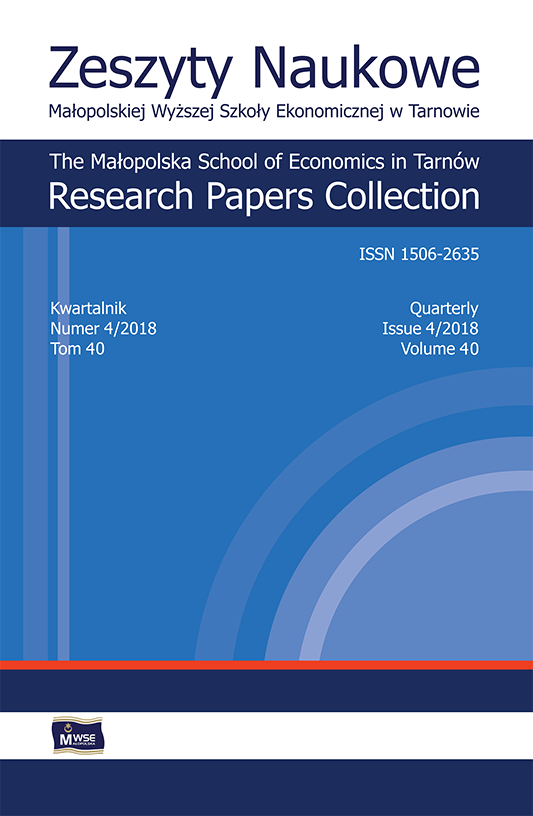Abstract
The paper presents an assessment of the practicability of four software applications selected from those available in the Polish market to estimate and analyze energy expenditure in the context of their usefulness in design and organization of workplace in enterprises operating in Poland. Research questions are formulated, physiological, regulatory and functional guidelines are discussed, based on which assessment criteria are developed. Presented are averaged results of the rating performed independently by three experts and five occupational safety and health officers employed at different manufacturing plants. The study showed that none of the applications satisfied a majority of the developed criteria at once. They are mainly useful for estimating energy expenditure for male workers but they do not provide a full representation of compliance with the current statutory regulations. Further, independent analysis based on the records of generated results is either incomplete or hindered by the imposed way of value entry which requires that additional calculations be first performed. Based on the results of a comparative analysis of the functionalities offered by the applications, guidelines for software applications yet to be developed for estimating and analysis of human energy expenditure at the workplace are proposed.
References
Aplikacja Asystent BHP. (2017) [online, accessed: 2017-09-01]. Kraków: Tarbonus. Retrieved from: https://sklep.tarbonus.pl/glowna/124-asystent-bhp-wersja-80.html.
View in Google Scholar
Byrska, K. (2013). Możliwości zastosowania aparatury cosmed fitmate pro w określaniu wydatku energetycznego pracowników fizycznych. Logistyka, 4, 23–33.
View in Google Scholar
CIOP–PIB. (2005). Interaktywny system oceny ryzyka zawodowego IRYS [online, accessed: 2017-09-01]. Warszawa: Centralny Instytut Ochrony Pracy – Państwowy Instytut Badawczy. Retrieved from: https://www.ciop.pl/CIOPPortalWAR/appmanager/ciop/pl?_nfpb=true&_pageLabel=P11000393471342264060084.
View in Google Scholar
CIOP–PIB (2009). Zasady kwalifikacji prac w szczególnych warunkach i o szczególnym charakterze. Poradnik do ustawy z dnia 19 grudnia 2008 r. o emeryturach pomostowych [online, accessed: 2017-09-01]. Warszawa: Centralny Instytut Ochrony Pracy – Państwowy Instytut Badawczy. Retrieved from: http://archiwum.ciop.pl/zasoby/EMERYTURY_POMOSTOWE_poradnik.pdf.
View in Google Scholar
Dębowski, M. T., Spioch, F. M. 1992. Chronometrażowo-tabelaryczna metoda oceny wydatku energetycznego. Zastosowania Ergonomii, 3, 67–77.
View in Google Scholar
Górska, E. (2007). Ergonomia, projektowanie, diagnoza, eksperymenty. Warszawa: Oficyna Wydawnicza Politechniki Warszawskiej. ISBN 9788372077103.
View in Google Scholar
Grzywiński, W., Mederski, P., Bembenek, M. (2014). Porównanie metod określania wydatku energetycznego na przykładzie leśnictwa. Leśne Prace Badawcze, 75 (4), 417–421. DOI: 10.2478/frp-2014-0038.
View in Google Scholar
Ilmarinen, J. (1992a). Job design for the aged with regard to decline in their maximal aerobic capacity: Part I—Guidelines for the practitioner. International Journal of Industrial Ergonomics, 10, 53–63.
View in Google Scholar
Ilmarinen, J. (1992b). Job design for the aged with regard to decline in their maximal aerobic capacity: Part II—The scientific basis for the guide. International Journal of Industrial Ergonomics, 10, 65–77.
View in Google Scholar
Konarska, M. (1985). Metody oceny wydatku energetycznego. Bezpieczeństwo Pracy, 6, 3–8.
View in Google Scholar
Konarska, M., Kurkus-Rozowska, B., Krokosz, A., Furmanik, M. (1994). Application of pulmonary ventilation measurements to assess energy expenditure during manual and massive muscular work. In: Proceedings of the 12th Congress of IEA (pp. 316–317). Toronto: Human Factor Association of Canada.
View in Google Scholar
Koradecka, D. (2010). Handbook of occupational safety and health. Boca Raton, FL: CRC Press. ISBN 9781439806845.
View in Google Scholar
Koradecka, D., Bugajska, J. (1999). Physiological instrumentation. In: W. Karwowski, W. S. Marras (eds.). The occupational ergonomics handbook (pp. 525–547). Boca Raton, FL: CRC Press. ISBN 0849326419.
View in Google Scholar
Koradecka, D., Sawicka, A. (1987). Ocena obciążenia organizmu pracą fizyczną. Bezpieczeństwo Pracy, 11, 9–14.
View in Google Scholar
Kozłowski, S., Nowakowska, A., Kirschner, H., Obuchowicz-Łożyńska, Z. (1968). Ocena wyliczania wysokości pułapu tlenowego człowieka (nomogram Astrand-Ryhming) jako pomiaru zdolności do pracy w warunkach aerobowych. Wychowanie Fizyczne i Sport, 4–12.
View in Google Scholar
Lehmann, G. (1966). Praktyczna fizjologia pracy. Warszawa: Państwowy Zakład Wydawnictw Lekarskich.
View in Google Scholar
Lubaś, P. (2017). Kalkulator wydatku energetycznego uproszczoną metodą wg Lehmanna. Instrukcja obsługi aplikacji z odrobiną praktycznych komentarzy [online, dostęp: 2017-09-01]. Szczecin: Okręgowy Inspektorat Pracy w Szczecinie. Retrieved from: http://docplayer.pl/5113844-Kalkulator-wydatku-energetycznego-uproszczona-metoda-wg-lehmanna.html.
View in Google Scholar
Makowiec-Dąbrowska, T. (1995). Czy ciężka praca fizyczna jest czynnikiem ryzyka choroby niedokrwiennej serca? Medycyna Pracy, 43, 263–274.
View in Google Scholar
Makowiec-Dąbrowska, T. (1999). Fizjologia pracy. In: J. A. Indulski (ed.). Higiena pracy. Łódź: IMP. ISBN 8388261053.
View in Google Scholar
Makowiec-Dąbrowska, T., Radwan-Włodarczyk, Z., Koszada-Włodarczyk, W., Jóźwiak, Z. (1999). Koszt energetyczny pracy. Wytyczne dotyczące określania. Łódź: Oficyna Wydawnicza IMP. ISBN 8386052694.
View in Google Scholar
Makowiec-Dąbrowska, T., Radwan-Włodarczyk, Z., Koszada-Włodarczyk, W., Jóźwiak, Z. (2000). Obciążenie fizyczne – praktyczne zastosowanie różnych metod oceny. Łódź: Instytut Medycyny Pracy im. prof. J. Nofera. ISBN 8388261029.
View in Google Scholar
Pałka, M. (1990). Metabolizm człowieka podczas pracy (propozycja standaryzacji badań). Bezpieczeństwo Pracy, 11, 3–6.
View in Google Scholar
PIP. (2017). Rekomendowane przez OIP Szczecin metody szacowania poszczególnych grup ergonomicznych czynników ryzyka [online, accessed: 2017-09-01]. Szczecin: Państwowa Inspekcja Ochrony Pracy. Okręgowy Inspektorat Pracy w Szczecinie. Retrieved from: https://szczecin.pip.gov.pl/pl/dzialania/prewencja-i-promocja/ergonomia/2485,rekomendowane-przez-oip-szczecin-metody-szacowania-poszczegolnych-grup-ergonomicznych-czynnikow-ryzyka-.html.
View in Google Scholar
Program Laborant. (2013). [online, accessed: 2017-09-01]. Gdańsk: An Lab Ochrona Środowiska i Bezpieczeństwa Pracy. Retrieved from: http://www.an-lab.pl/LaborantOpis.php.
View in Google Scholar
Rogoziński, A. (1988). Prosta metoda oceny wydatku energetycznego. Bezpieczeństwo Pracy, 11–12, 9–13.
View in Google Scholar
© Copyright by Małopolska School of Economics in Tarnów. The articles are available under the Creative Commons Attribution NonCommercial-NoDerivatives 4.0 International License


